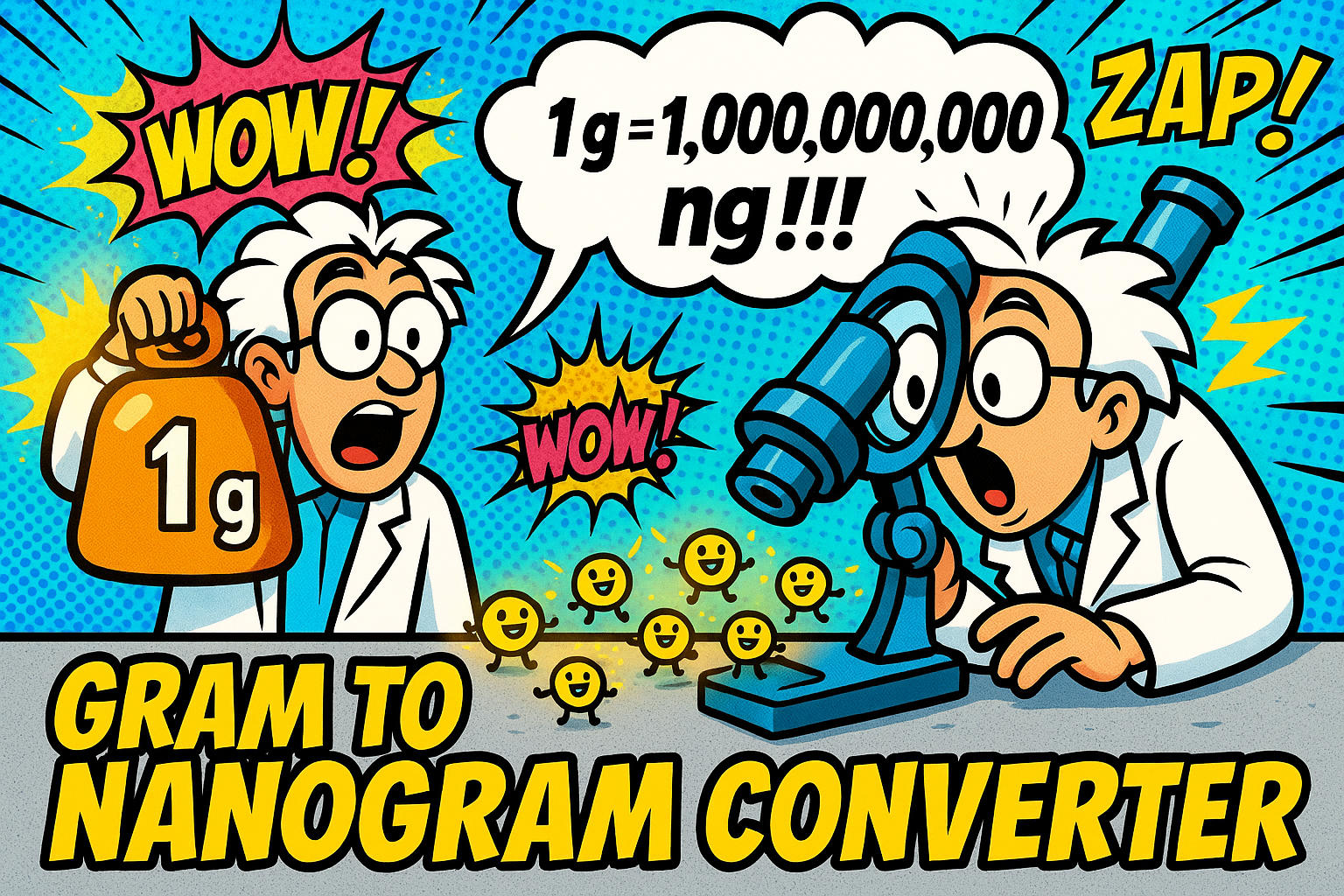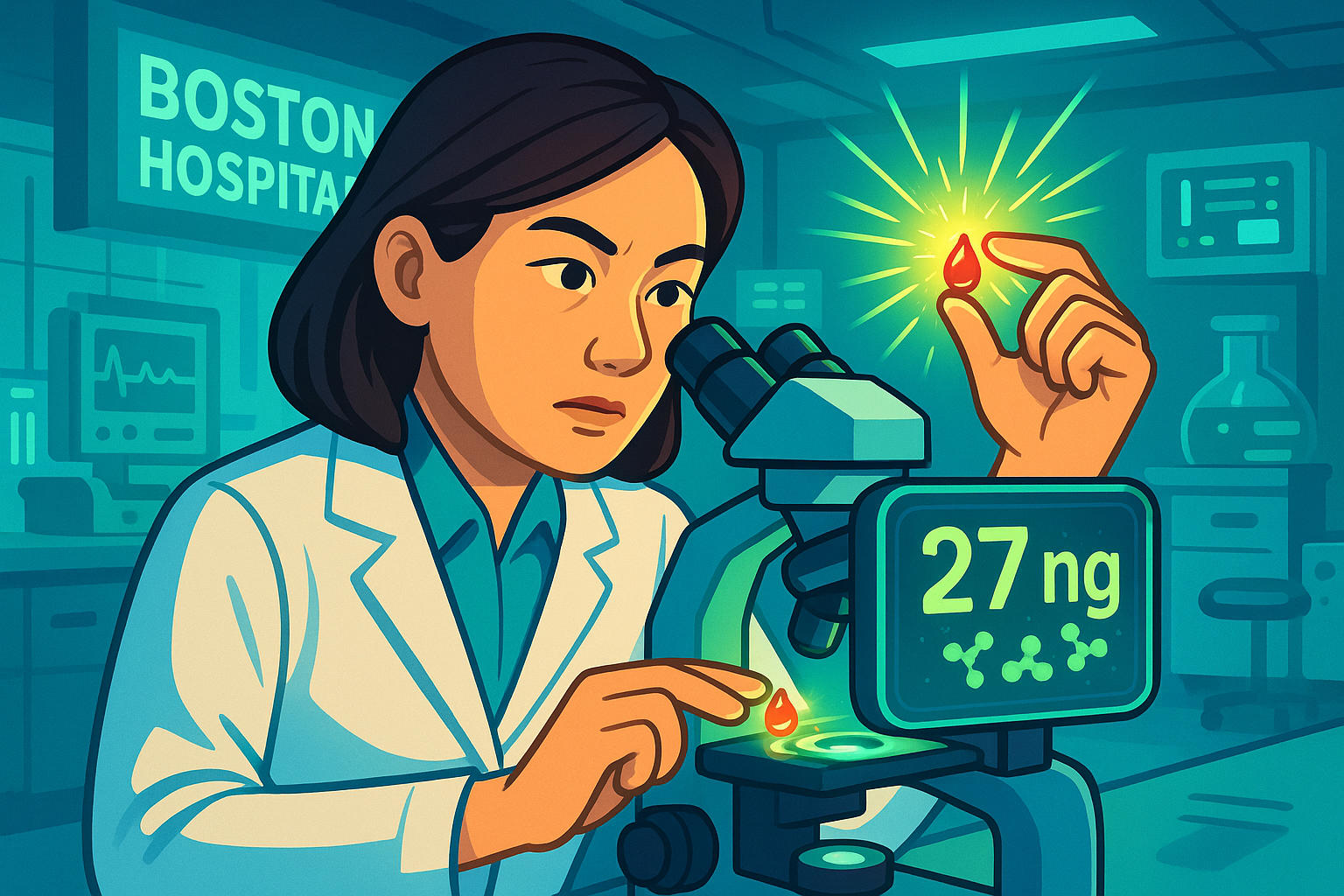gram to nanogram – How to convert g to ng
Need to convert grams to nanograms? You're diving into the world of microscopic measurements, where even a single gram can be split into billions of parts. Converting gram to nanogram (g to ng) is crucial in fields like medicine, chemistry, and nanotechnology. In this article, we’ll break down what these units mean, how to convert them, and why they matter.

What is a Gram?
A gram (g) is a fundamental unit of mass in the metric system. It’s commonly used in daily life for measuring ingredients, postage, food, and medications. Scientists also use grams for mid-range measurements in labs and research settings.
-
Symbol: g
-
Equals: 1,000 milligrams or 0.001 kilograms
-
Related tools:
What is a Nanogram?
A nanogram (ng) is a billionth of a gram. It’s so small that it's invisible to the naked eye and is typically used in molecular biology, forensic science, and pharmaceutical analysis. For context, the weight of a single DNA molecule is measured in nanograms.
-
Symbol: ng
-
Equals: 0.000000001 grams (1 × 10⁻⁹ g)
How to Convert Gram to Nanogram?
This is a straightforward conversion using scientific notation:ng = g × 1,000,000,000
Example: If you have 0.002 grams:0.002 × 1,000,000,000 = 2,000,000 nanograms
For advanced calculations, try our converter
Did You Know?
-
A single grape weighs about 5 grams, making it a common reference object in nutritional science.
-
In space missions, grams are critical: every extra gram of cargo can cost thousands of dollars in fuel and launch expenses.
-
Some drug tests detect substances down to 5 ng/mL. That’s five billionths of a gram per milliliter of fluid!
-
In forensic science, a single strand of hair can contain nanogram levels of DNA—enough to identify a person in a court of law.
Dr. Lin and the 27 Nanograms That Changed Everything
Dr. Angela Lin had spent ten years researching rare genetic disorders in a hospital lab in Boston. Her breakthrough came not from a major experiment, but from a routine blood sample weighing less than one gram.
Inside that tiny sample, Dr. Lin discovered 27 nanograms of a rare mutated protein, enough to pinpoint the cause of a child’s undiagnosed condition. “It was invisible to every traditional method,” she explained in an interview with Medical Science Today. “But those nanograms told us everything.”
The hospital soon adopted nanogram-based screening for neonatal care, potentially saving dozens of lives annually. Today, Dr. Lin’s method is taught in medical schools, a reminder that even a billionth of a gram can change a life.

Conclusion
How to convert grams to nanograms opens the door to precision-level science and technology. From DNA testing to drug formulation, the conversion 1 g = 1,000,000,000 ng isn't just math—it’s critical knowledge.
If you're working across unit scales, try our Weight Converter

